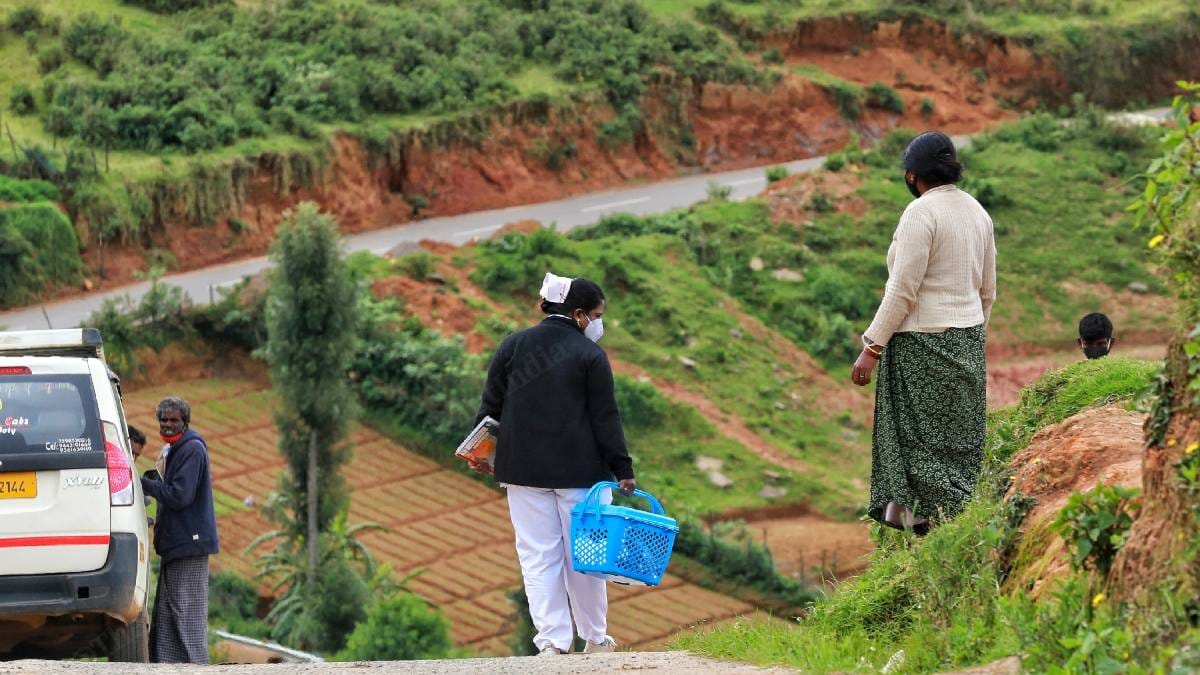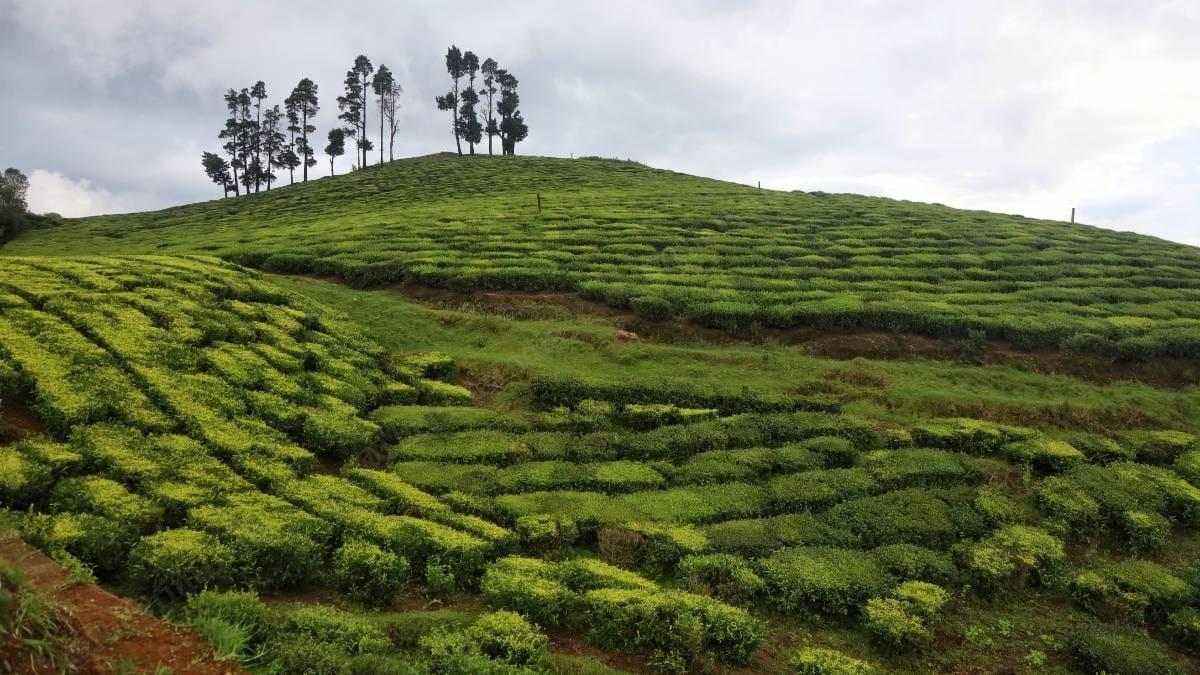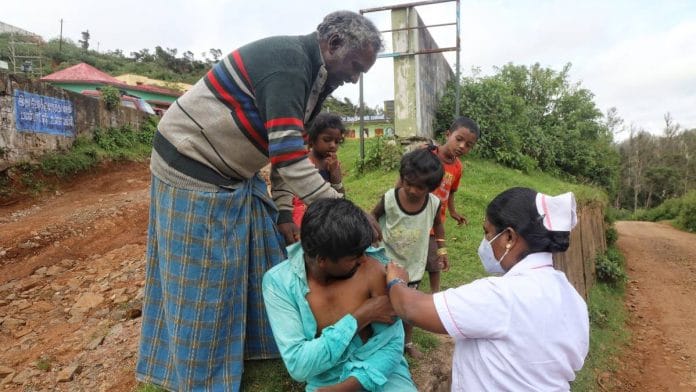Kunda, Nilgiris (Tamil Nadu): In the vaccine hesitancy high state of Tamil Nadu, Nilgiris stands out for setting the record on vaccinating all its tea plantation workers and vulnerable tribal groups with one dose of Covishield. Now, nurse Mary Joice and data entry operator Kasthuri are trekking up slippery hill slopes to cover the district’s 5,000 people with disabilities.
District Collector J. Innocent Divya was honoured by CM M.K. Stalin for achieving 100 per cent vaccination among the tea plantation workers and tribals by accessing remote locations and battling vaccine hesitancy. The Niligirs was the first district in Tamil Nadu to achieve this feat.
This journey however has not been easy. Kasthuri, Joice and plenty others have been on the go for nearly twelve hours a day, six days a week since April to convince the local population to get vaccinated. The tough terrain in the district, with high slopes, dense jungles and lakes in between does not make the job easier.

“We had many difficulties. Reaching so many areas was difficult, there was no awareness about the vaccine. We had to battle vaccine hesitancy by showing other people who had taken the vaccine. The climate was tricky, we had to work despite the heavy rain,” said Kasthuri.
Agreeing, Joice said, “There is no bus facility in many places, so we have to walk … there are leopards in the area and I have fallen down several times climbing these slopes.”
Due to the long arduous walks over the past four months, Joice said her weight dropped by 24ks, to 61kg from 85 kg.
Despite these difficulties, the vaccine team managed to first-dose vaccinate the whole population of tea plantation workers of roughly 38,000 people, along with all particularly vulnerable tribal groups (PVTGs), another 21,000 people, in a span of about 40 days.

Also read: Why it won’t be easy for Tamil Nadu to tighten Covid curbs for travellers from Kerala
Second wave warning
Responsible for most of the tea produced in South India, the Nilgiris has either a tea estate or a patch of land growing tea at almost every turn. The British established the first tea plantation here in 1845.
Of the 38,000 tea plantation workers living here, many of them belong to PVTGs such as the Todas, Kotas, Irulas, Katanayaks, Kurumbas, Panniyahs, according to Collector Divya.
While the first Covid wave didn’t see too many cases in the district, there was a significant rise in the second wave. This is why the local administration sprung to action in terms of vaccinations, to ensure the situation did not worsen since tea plantations are covered under essential services. Given that the occupation requires relatively close contact among workers, a single case could result in a significant population being infected.
“We put in rule that in tea plantations, workers could only work if they were vaccinated as the cases started to rise, and it is important to note that tea is an essential service,” Divya told ThePrint.
She also said tea workers were less hesitant about taking the vaccine than the tribal groups in the region.
United Planters’ Association of Southern India (UPASI) Secretary Sanjith Nair explained that tea plantations were among the few areas where social distancing was possible. However, the second wave proved tricky and individual tea estate owners took the help of the district administration to ensure workers got vaccinated.
“The second wave saw a significant number of cases in the district. This is when the plantation sector facilitated vaccination drives along with local administration. There was initially some reluctance in late March-April. However, with the help of local administration this was easily overcome,” Nair said.

Divya explained that for each PVTG, the vaccine drive had to be done in their homes and villages since they could not afford to lose a day’s wage.
“The vaccine drive was done either before or after work. We took the help of many NGOs and even sang songs in the local language to combat vaccine hesitancy, which was a problem initially,” she said.
The entire population in the district is now due for their second dose in late August-September, a task that remains daunting.
“As the time for the second dose is around the corner, we look forward to the support of the district administration in completing vaccinations for the tea garden workers in the district,” said Nair.
(Edited by Manasa Mohan)
Also read: How well did states handle 2nd wave? Survey puts TN, Andhra on top, Bengal, Bihar, Delhi last






